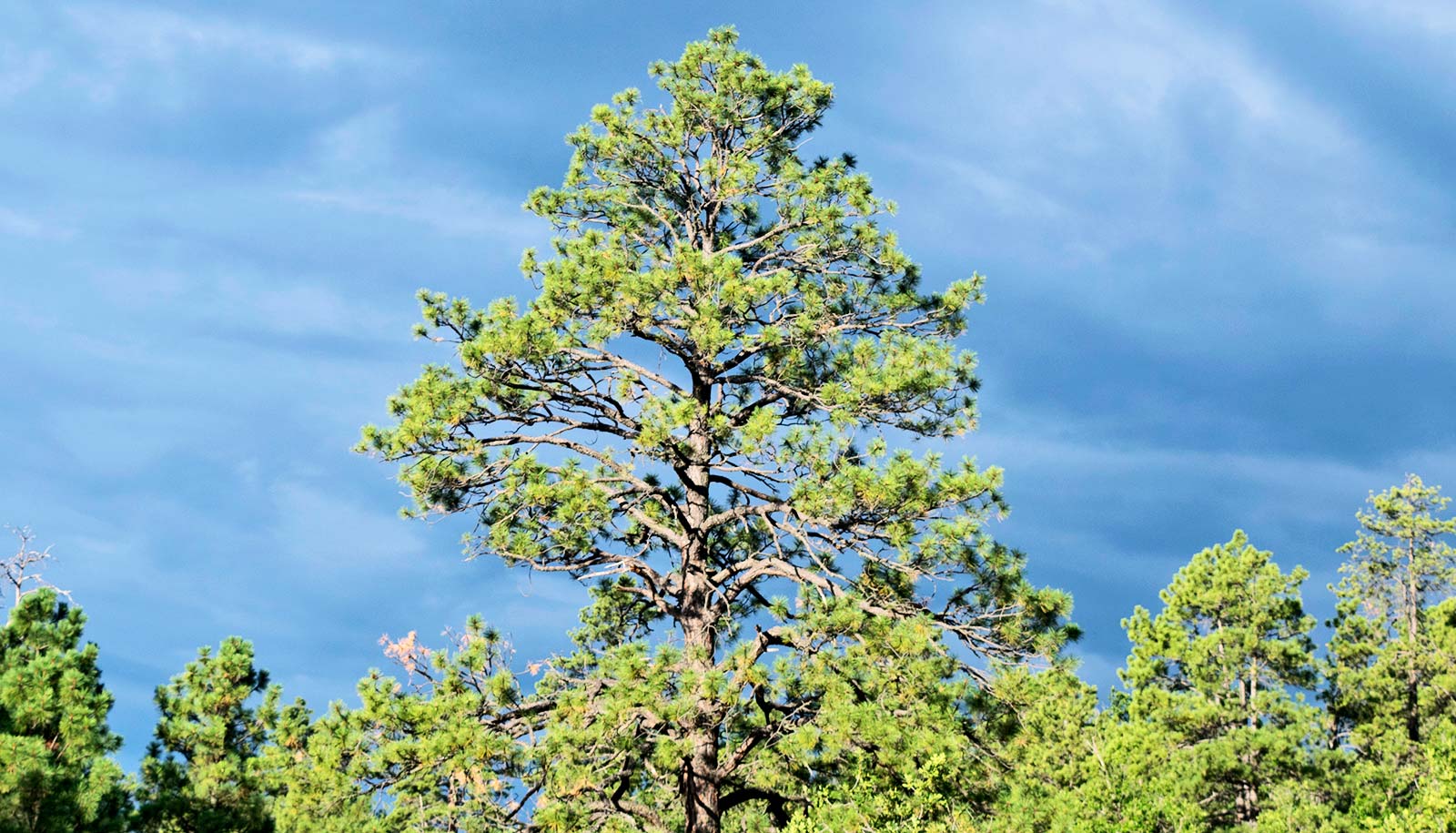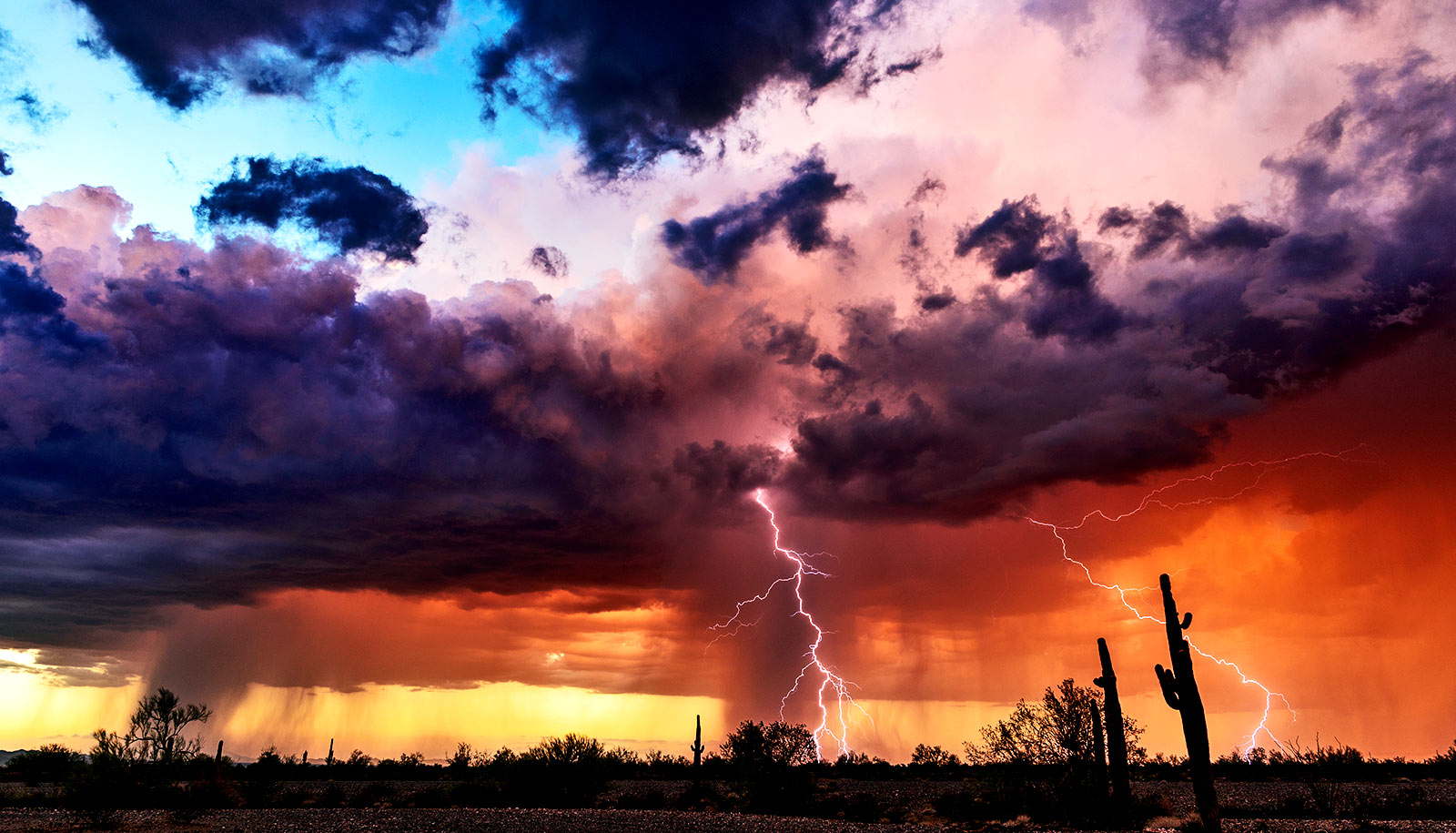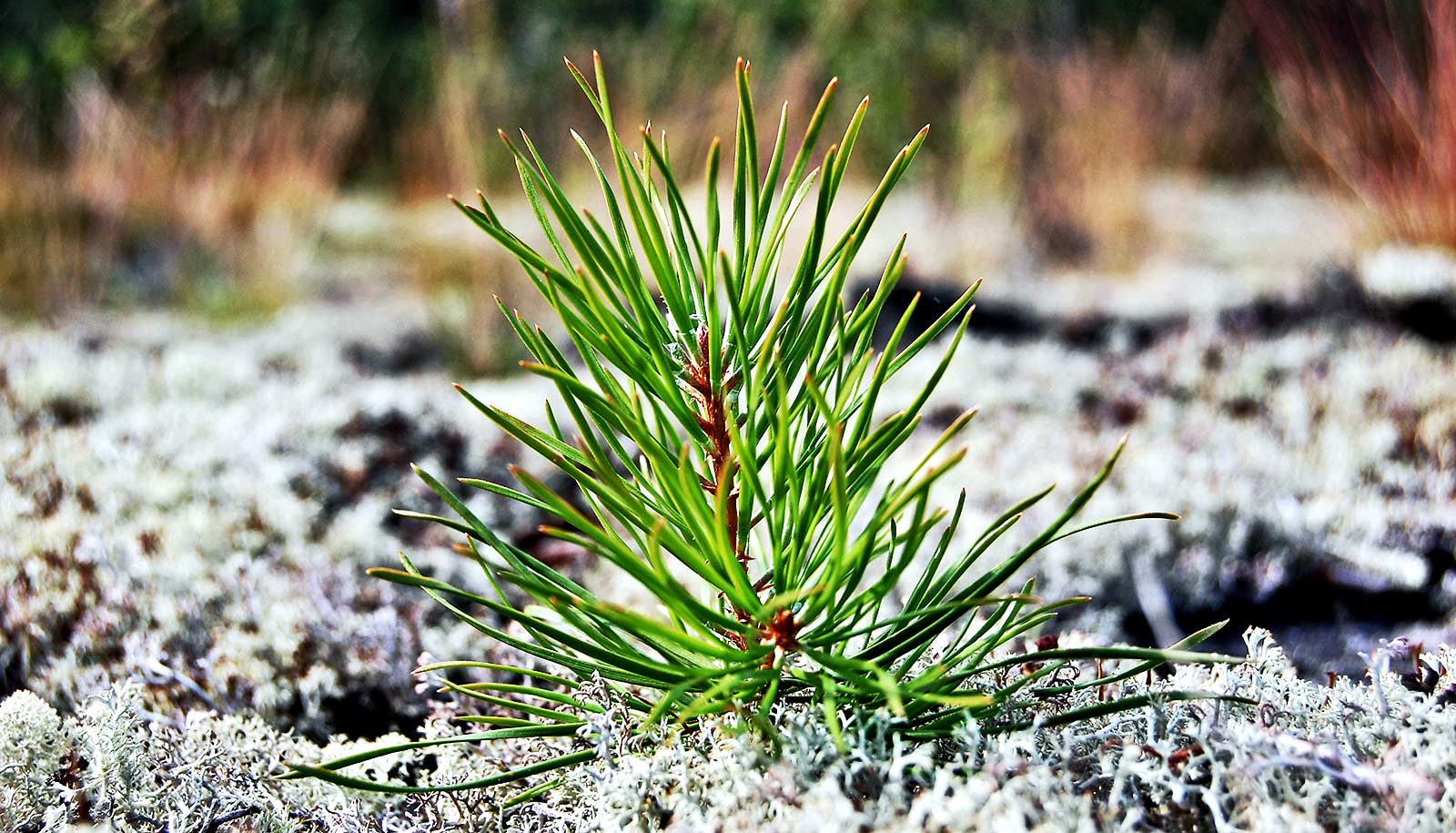A 23-year megadrought may have ponderosa pine trees at the end of their rope, research shows.
The semi-arid trees are one of the most ubiquitous conifer species in western North America, extending from southern British Columbia all the way down to northern Mexico. In the American Southwest, winter snowmelt and summer rains have played a critical role in these forests’ survival.
“Forests in the Southwest are no strangers to droughts but have largely been able to cope with periods of drought throughout history,” says Brandon Strange, who recently graduated from the University of Arizona with a doctorate in natural resources from the College of Agriculture and Life Sciences.
Strange is lead author of the study in Global Change Biology that examines the role of monsoon precipitation in ponderosa pine forests across the Four Corners region. “However, the current megadrought is the most severe since the year 800 CE,” he says.
With declining winter snowpack and increasing temperatures, “we are starting to approach a level of drought where Southwestern forests, particularly those lacking regular summer rains, are really unable to cope with the stress,” Strange says.
Strange and his coauthors turned to tree-ring data to better understand how forests may weather the current megadrought and adapt to future droughts.
“By studying how trees have been physiologically responding to climate since 1960, we can see that different populations are moving in different directions,” says coauthor Jia Hu, an associate professor of watershed management and ecohydrology in the School of Natural Resources and the Environment. “It’s clear that not all populations are responding to the megadrought in the same way.”
Drought insulation
The research team compared carbon isotope analyses from 17 different ponderosa pine populations across the Four Corners, from two time periods: pre-megadrought (1960-2000) and during the megadrought (2000-2017).
The study examined two metrics of water use efficiency, which is a ratio of how much carbon a tree can take up while minimizing water loss. One metric measured the tree’s physiological response, while the other incorporated the influence of atmospheric demand or aridity on tree water loss.
“Trees typically have a mechanism to insulate themselves from drought, where they reduce their stomatal conductance, or close off the little pores on their leaves or needles,” Strange says. “This allows them to hold on to water from winter snowmelt and rain, which would otherwise be lost to the atmosphere.”
Water leaves trees through the transpiration process, in which the atmosphere sucks water through trees, like a straw, says Hu, who is also director of the Southwest Climate Adaptation Science Center in the Arizona Institute for Resilience.
“Trees can reduce water loss by closing their stomata—kind of like pinching the straw a little,” she says. “But if the atmosphere is too dry, that pinch can’t completely reduce water loss.”
Ponderosa pines feeling the squeeze
The study found that from 1960-2000, ponderosa pine forests in the Southwest were able to successfully regulate water loss in response to aridity, with or without the respite of monsoon rains.
However, since the onset of the megadrought in 2000, ponderosa pine forests growing outside the reach of the North America monsoon—which extends from northern Mexico up the Mogollon Rim and begins to drop off in northern Arizona and New Mexico—are really feeling the squeeze.
“What we’re seeing is that despite their attempts to limit how much water they lose by reducing stomatal conductance, they simply can’t; it’s too dry and too hot,” Strange says. “They’re at the end of their rope, so to speak. They’re essentially desiccating and may be more susceptible to mortality.”
On the other hand, ponderosa pine populations growing in the heart of the monsoon region—in southern Arizona and New Mexico—have still been able to beat the heat, underscoring the importance of regular summer rains. But there is a limit to what monsoons can do.
“Even these trees are moving toward a trajectory in their response that suggests the monsoon rains may not be able to continue providing a buffer,” Strange says. “The study suggests that the protection the North American monsoon provides these ponderosa forests may be diminishing as the megadrought persists.”
Whether or not the drying or desiccating ponderosa populations, particularly those that lay outside of the monsoon’s reach, can recover is hard to know, Strange says. Should the megadrought abate, they may still be past the point of no return.
“There’s the concept of hydraulic failure, where if enough of the trees’ tissues or vessels going from the roots all the way to the leaves or needles collapse, then they could be done for,” Strange says. “The likelihood of hydraulic failure increases with increasing heat waves and aridity. Without more information, we can’t really say but it’s not looking good.”
Additional coauthors are from the University of Utah, the Natural Resources Institute Finland, and the University of Arizona.
Source: University of Arizona



